- Have any questions?
- 080 2558 0771
- 080 2558 0772
- mail@beleastmail.com
Day 1: Luang Prabang – Oudomxai
Arrive in Luang Prabang and transfer by road through the scenic Laos countryside to Oudomxai (Muang Xai). Along the way, stop at ethnic minority villages and at Tad Lak Sip-et Waterfall, which cascades in a narrow stream over a limestone cliff.
Oudomaxai is a forested mountainous area in the north-west of the country and home to many ethnic groups, some of whom live in mountain villages in extremely remote areas. The provincial capital has a richly diverse population of Lao Theung and Lao Seung, Chinese and Lao Loum. From the main street, traditional thatched houses spread across the edge of the valley towards the base of the surrounding mountain range. Walk around the town to see the local market, Phou Phra That and then proceed up Phou Xay Hill from where there are panoramic views of the town and surrounding area.
Overnight in Oudomxai.
Day 2: Oudomxai – Boun Neua
Journey by road from Oudomxai to Boun Neua and overnight.
Day 3: Boun Neua – Phongsali
Depart for Phongsali, one of the most remote towns in Laos and set high in the mountains. It sits on the slopes of Mount Phou Fa and has a cool climate with misty mornings all year round. In the centre of the town are houses built in Yunnanese style with ornate wooden fronts. Most of the population in the area belongs to the Phu Noi minority, who maintain a distinct local culture, although they no longer dress traditionally. Visit the summit of Phou Fa and walk up the many steps to That Phou Fa. Visit the Talat local market to see the range of produce for sale and listen to the local villagers barter for the best prices.
Overnight in Phongsali.
Day 4: Phongsali – Muang Khua
Set out from Phongsali to Hat Sa and then take a boat to Muang Khua. The northern town of Muang Khua sits on the bank of the Nam Ou River, near the mouth of the Nam Phak and is a beautiful, untouched, peaceful spot. It is home to large numbers of Chinese and Vietnamese immigrants and still has traces of old French colonial architecture. Explore the village on foot to see the local market and the Wat Sikhounmuang and then cross the river via the steel cable suspension bridge. From here enjoy breathtaking views over the Nam Pak River and the mountains.
Overnight in Muang Khua.
Day 5: Muang Khua – Nong Khiaw
In the morning board a boat and journey to Nong Khiaw. This part of the river winds through spectacular scenery, with impressive limestone cliffs, dense vegetation and sandy beaches. On the way, stop at Muang Ngoi, a lovely rustic village right in the middle of the mountains, still inaccessible by road. Break for lunch and spend a few hours exploring the area before continuing to Nong Khiaw, a sleepy market town on the bank of the river with a backdrop of mountains.
Overnight in Nong Khiaw.
Day 6: Nong Khiaw – Luang Prabang
From Nong Khiaw, travel by road to Luang Prabang. Along the way, stop at Ban Pak Ou village and cross by local ferry to the steep limestone cliffs overlooking the Mekong and Nam Ou rivers, home to the Tham Pak Ou Caves, one of the most revered holy sites in Laos. There are actually two caves, Tham Ting and Tham Phoum. Originally they were used for the worship of the river spirit until Buddhism spread into Laos along the southern route from India. Gradually, over the 60 decades, more than 4,000 Buddha images have been placed in the caves. They are mainly wooden figures, some badly damaged, that have been laid out over the wall shelves. They take many different positions, including meditation, teaching, peace, rain, and reclining (nirvana). After exploring these fascinating caves, stop at Ban Xang Hai village. This local village has for centuries made the earthen jars used as fermenting containers for Lao wine. Nowadays, it specialises in producing a wide range of lau lao (Lao whisky) and lau hai (Lao wine).
Overnight in Luang Prabang.
Day 7: Depart
Day 1: Luang Prabang – Oudomxai
Arrive in Luang Prabang and transfer by road through the scenic Laos countryside to Oudomxai (Muang Xai). Along the way, stop at ethnic minority villages and at Tad Lak Sip-et Waterfall, which cascades in a narrow stream over a limestone cliff.
Oudomaxai is a forested mountainous area in the north-west of the country and home to many ethnic groups, some of whom live in mountain villages in extremely remote areas. The provincial capital has a richly diverse population of Lao Theung and Lao Seung, Chinese and Lao Loum. From the main street, traditional thatched houses spread across the edge of the valley towards the base of the surrounding mountain range. Walk around the town to see the local market, Phou Phra That and then proceed up Phou Xay Hill from where there are panoramic views of the town and surrounding area.
Overnight in Oudomxai.
Day 2: Oudomxai – Boun Neua
Journey by road from Oudomxai to Boun Neua and overnight.
Day 3: Boun Neua – Phongsali
Depart for Phongsali, one of the most remote towns in Laos and set high in the mountains. It sits on the slopes of Mount Phou Fa and has a cool climate with misty mornings all year round. In the centre of the town are houses built in Yunnanese style with ornate wooden fronts. Most of the population in the area belongs to the Phu Noi minority, who maintain a distinct local culture, although they no longer dress traditionally. Visit the summit of Phou Fa and walk up the many steps to That Phou Fa. Visit the Talat local market to see the range of produce for sale and listen to the local villagers barter for the best prices.
Overnight in Phongsali.
Day 4: Phongsali – Muang Khua
Set out from Phongsali to Hat Sa and then take a boat to Muang Khua. The northern town of Muang Khua sits on the bank of the Nam Ou River, near the mouth of the Nam Phak and is a beautiful, untouched, peaceful spot. It is home to large numbers of Chinese and Vietnamese immigrants and still has traces of old French colonial architecture. Explore the village on foot to see the local market and the Wat Sikhounmuang and then cross the river via the steel cable suspension bridge. From here enjoy breathtaking views over the Nam Pak River and the mountains.
Overnight in Muang Khua.
Day 5: Muang Khua – Nong Khiaw
In the morning board a boat and journey to Nong Khiaw. This part of the river winds through spectacular scenery, with impressive limestone cliffs, dense vegetation and sandy beaches. On the way, stop at Muang Ngoi, a lovely rustic village right in the middle of the mountains, still inaccessible by road. Break for lunch and spend a few hours exploring the area before continuing to Nong Khiaw, a sleepy market town on the bank of the river with a backdrop of mountains.
Overnight in Nong Khiaw.
Day 6: Nong Khiaw – Luang Prabang
From Nong Khiaw, travel by road to Luang Prabang. Along the way, stop at Ban Pak Ou village and cross by local ferry to the steep limestone cliffs overlooking the Mekong and Nam Ou rivers, home to the Tham Pak Ou Caves, one of the most revered holy sites in Laos. There are actually two caves, Tham Ting and Tham Phoum. Originally they were used for the worship of the river spirit until Buddhism spread into Laos along the southern route from India. Gradually, over the 60 decades, more than 4,000 Buddha images have been placed in the caves. They are mainly wooden figures, some badly damaged, that have been laid out over the wall shelves. They take many different positions, including meditation, teaching, peace, rain, and reclining (nirvana). After exploring these fascinating caves, stop at Ban Xang Hai village. This local village has for centuries made the earthen jars used as fermenting containers for Lao wine. Nowadays, it specialises in producing a wide range of lau lao (Lao whisky) and lau hai (Lao wine).
Overnight in Luang Prabang.
Day 7: Depart




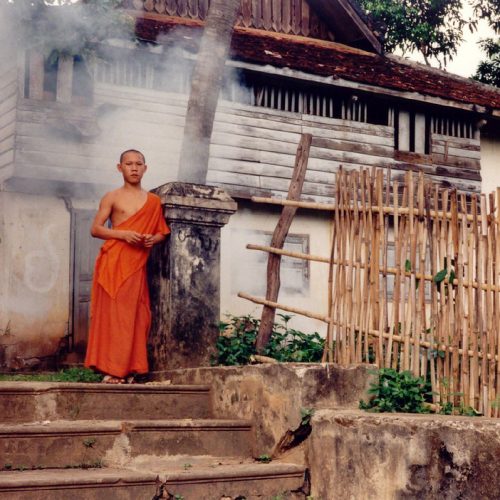
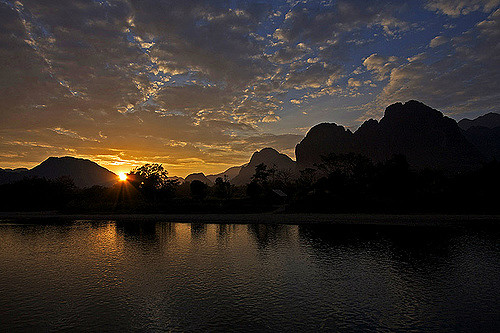
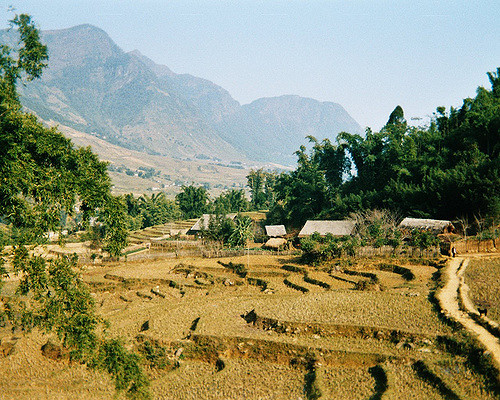

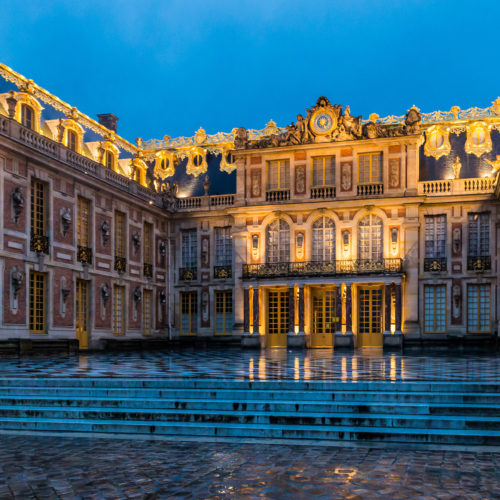
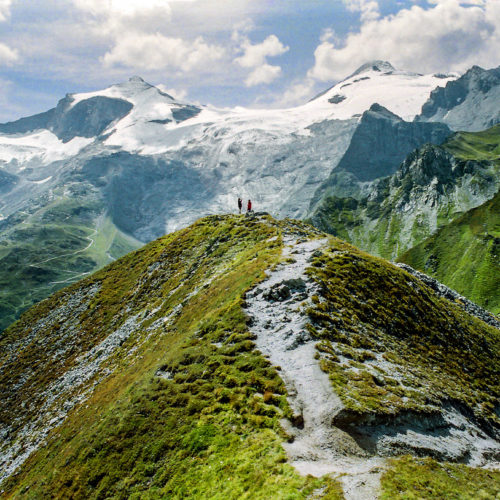
Reviews
There are no reviews yet.